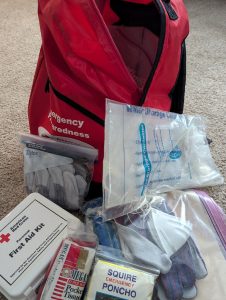Sep
04

Posted by Carolyn Martin on September 4th, 2025
Posted in: Emergency Preparedness, Health Observances
Tags: disaster preparedness, mental health, National Health Observances, volcanoes
September is National Preparedness Month and for the next few months, Region 5 staff will be posting about emergency preparedness. Each month we will focus on a specific emergency that will include:
 We won’t be able to cover everything, but we will do our best to help you and your community. When we can, we will include information about specific populations such as children, older adults, and health conditions. You may also notice some of the same resources listed in several posts as these may have information for different disasters that will be covered in this series.
We won’t be able to cover everything, but we will do our best to help you and your community. When we can, we will include information about specific populations such as children, older adults, and health conditions. You may also notice some of the same resources listed in several posts as these may have information for different disasters that will be covered in this series.
This month the focus is on volcanoes. According to USGS (United States Geological Survey), there are currently about 170 potential active volcanoes in the United States and its territories. Many of these are in our Region 5 with Hawaii being the ‘Hot Spot’ of the center of what is called the Ring of Fire which includes Alaska and the Cascade Range. However, other states also have potential volcanoes that could erupt.
What can volcanoes have on human health? Volcanoes create ash and contain gases such as sulfur dioxide that can affect your breathing and irritate your eyes and skin. Additionally, volcanoes can impact water sources, damage buildings, start wildfires, and create other risks.
What should be taken into consideration when preparing for a volcanic eruption?
Don’t forget local resources from your city, county/borough, and state. These may be public health departments, department of natural resources, emergency management, or similar names. Schools, hospitals, and workplaces may also have their own or helpful guidance. You may find these more helpful as they apply to where you live and work.
Take some time to review on your own and review with your co-workers and family so you can be as prepared as possible.
MedlinePlus Volcanoes health topic page, includes links to some basic information from vetted resources as well as the link to the Disaster Preparation and Recovery and Coping with Disasters health topic pages. These additional pages are great resources to have throughout these disaster events.
Ready.gov includes resources and information for preparing, during, and how to be safe after a volcanic eruption. This website provides clear and specific information for the public. It includes a handy printable/downloadable sheet so you can refer to it as needed.
Kids Environment Kids Health is a resource just for kids provided by the NIH National Institute of Environmental Health Sciences. What’s unique about this resource is the information is specifically written to kids to help their families to do emergency planning. Though it is primarily for weather related disasters, it is relevant to volcanoes. Ready.gov also includes a section for kids and teens to do their part and know they are helping.
The CDC (U.S. Centers for Disease Control and Prevention) volcanic preparation webpage includes preparing your car, your home, when and how to evacuate, what supplies you may need, and more. It includes additional information links that you may also find helpful such as safety after the eruption and air pollution.